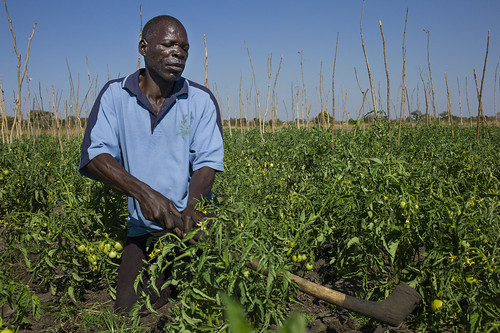
New FAO report discusses options for influencing food environments for healthy diets

A man works in his vegetable field on the Barotse Floodplain, Zambia (photo credit: WorldFish/Anna Fawcus).
A new publication by the Food and Agriculture Organization of the United Nations (FAO) focuses on influencing food environments for healthy diets through four areas: production of diversified food, food safety, food labelling and food-based dietary guidelines. FAO defines food environments as the settings with all the different types of food made available and accessible to people as they go about their daily lives.
The chapter on food safety was authored by Delia Grace, veterinary epidemiologist and food safety expert at the International Livestock Research Institute (ILRI). The chapter begins with an overview on foodborne diseases and the groups that are most vulnerable. It then goes on to discuss the health burden of—and trends in—foodborne diseases, the role of food safety in ensuring a healthy food environment and interventions that countries can take to improve food safety.
The recommendations put forward for improving food safety are:
- A ‘farm-to-fork’ approach is best for identifying control points
- Use risk-based approaches rather than hazard-based ones
- Where the informal sector predominates, professionalize rather than penalize
- Encourage the uptake of appropriate technology
- Improve food safety governance
- Take into account the costs of disease control
- Carry out holistic prioritization
The book was developed by FAO’s Nutrition and Food Systems Division as a follow-up activity to the Second International Conference on Nutrition held at FAO headquarters in Rome, Italy on 19–21 November 2014.




















